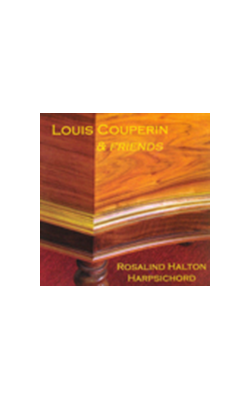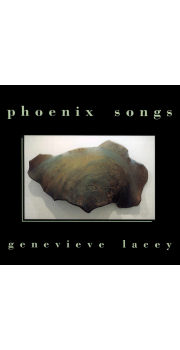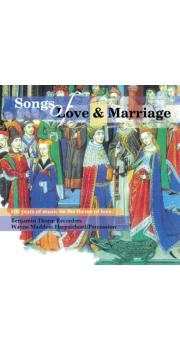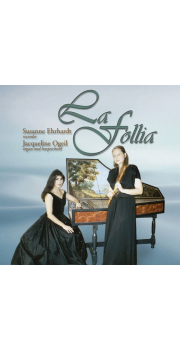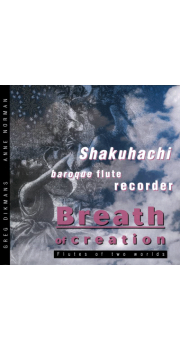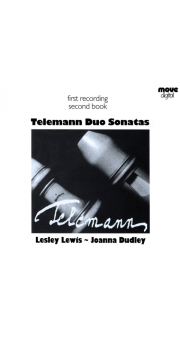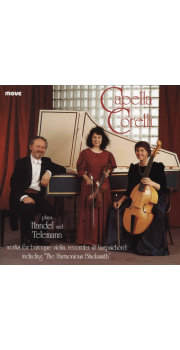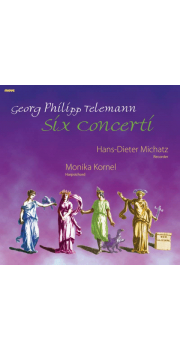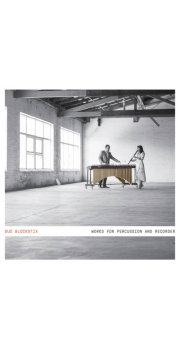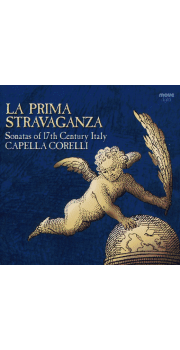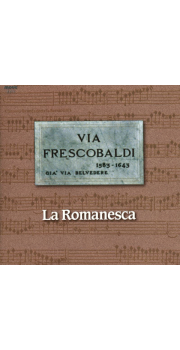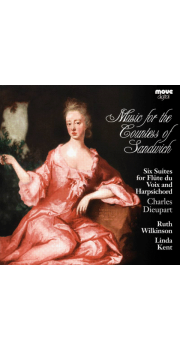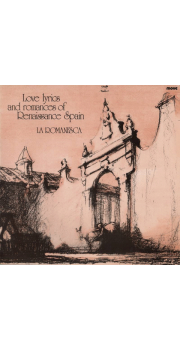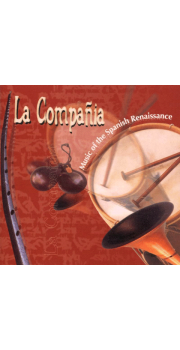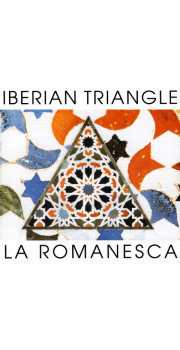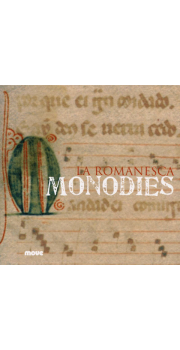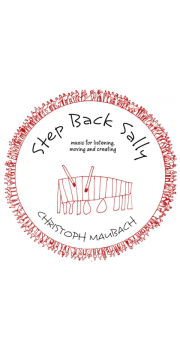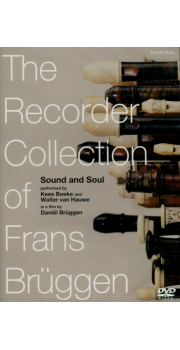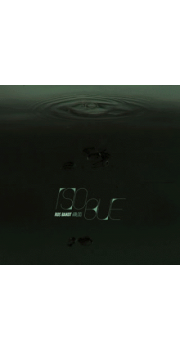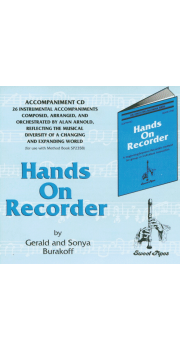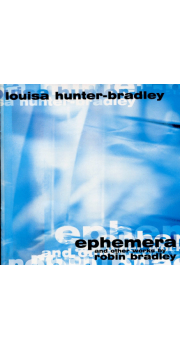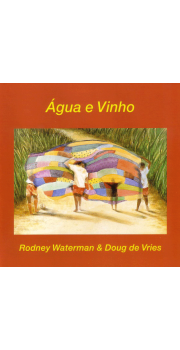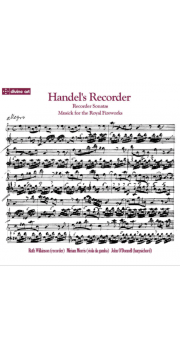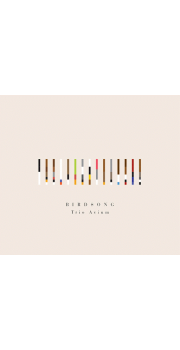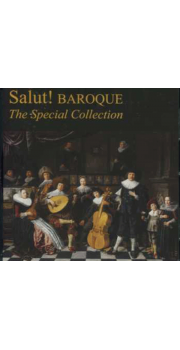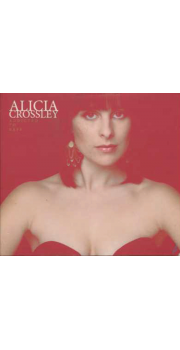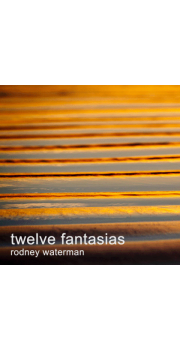No products
Prices are tax included
Louis Couperin and Friends
Keyboard music from the French Baroque
More info
Louis Couperin and Friends
Rosalind Halton - Harpsichord
"I can only say that one need hear no other player, for the beautiful airs and harmonies mixed together - the beauty of his movements and touch, the lightness and speed united to a most refined ear." The harpsichordist being described is Jacques Champion de Chambonnières, the writer Marin Mersenne, the year 1636.
In 1641 Chambonnières founded in Paris L'Assemblée des honnestes curieux, a group employed twice weekly from that year, making up one of the first concert series in European musical life. The aristocrat musician at the peak of his fame could not have predicted his fall from the favour of Louis XIV, driving him to seek employment outside of France to avoid the "low and wicked" machinations of court life. In happier days, Chambonnières was engaged to choose a harpsichord for the King, and danced with Louis XIV and Lully.
One of the musicians invited by the Sun King to supplant Chambonnières was Louis Couperin, who declined. It was Chambonnières who had discovered the Couperin family and invited Louis to Paris in the early 1650s, thus beginning the family's century-long ascendancy as keyboardists in the French capital.
Much has been made of the contrasting styles of Chambonnières and Louis Couperin, based on a famous letter of M. Le Gallois dated 1680, lamenting - already - the decline of "true taste" in harpsichord playing in favour of empty virtuosity. A supporter of Chambonnières' style, he mentions the aristocrat's "flowing playing, delicacy of hand, and natural, tender melodies .. adorned with ever fresh ornaments". On the other hand, Couperin was admired for the originality of his compositions, "enriched with beautiful dissonances, structure and imitative counterpoint".
According to Le Gallois, it was Chambonnières who "touched the heart" while Louis Couperin "touched the ear". But we may imagine the two musicians as colleagues who respected each other's work. In the Bauyn Manuscript (c.1660, Bibliothèque Nationale, Paris), a volume is dedicated to each of them.
Chambonnières lived to see his harpsichord suites (Ordres) into print, with two volumes in 1670: but Couperin's early death at the age of about 36 robbed him of this opportunity, so the Bauyn Ms. remains the essential source of his keyboard pieces, particularly of his Préludes non mésurées (unmeasured Preludes).
Using a notation style in which every note is shown as a semibreve, Couperin revelled in dissonant and often paradoxical harmonies in the Preludes, establishing a style that explores the full expressive range and sonorities of the 17thcentury French harpsichord. The essence of this style, derived from French lute preludes, is a polyphony unfolding in non-simultaneous layers, interpreted according to the performer's response to melodic gesture and harmonic event.
Louis Couperin, Suite in E minor
1. Prélude 1:32
2. Allemande "La Paix" 2:51
3. Courante 1:22
4. Sarabande 2:29
Louis Couperin, Pieces in C Major
5. Prélude 2:29
6. Allemande "Le Moutier"
J. de Chambonnières 2:21
7. Double du Moutier (LC) 2:15
8. Courante 1:32
9. Sarabande 1:18
10. Passacaille 5:19
11. Menuet 1:25
Pieces in F Major
12. Prélude (Louis Couperin) 2:59
13. Allemande (Chambonnières) 2:49
14. Courante 1:14
15. Sarabande 1:42
16. Chaconne 3:18
Gaspard Le Roux, Suite in A Major
17. Allemande gaye 2:30
18. Courante "La Venitiene" 1:30
19. Gigue 2:26
Francois Couperin, from the 5th Ordre
20. La Tendre Fanchon 3:27
21. La Flore 2:17
J-Ph. Rameau
22. L'Entretien des Muses 6:15
Louis Couperin, Pieces in D minor
23. Sarabande 2:41
24. Chaconne "La Complaignante" 2:37
25. Canaries 1:05
Louis Couperin, Suite in D Major
26. Prélude 3:40
27. Allemande 4:30
28. Courante 1:13
29. Sarabande 2:03
30. Gaillarde 1:29
31. Chaconne 2:18
Assured interpretations by accomplished Australian scholar-musician Rosalind Halton. Beautiful and fascinating repertoire unpretentiously performed and a worthy successor to her award-winning 1997 release The French Harpsichord (ABC Classics).
'Limelight Recommends' spot in 'Limelight', August 2005, by Stephen Schafer
30 other products in the same category:
Reference: MD3165
Brand: Move
Phoenix Songs
CD Recording: Like the phoenix 'rising from the ashes', the recorder is...
In StockReference: MD3219
Brand: Move
Songs of Love and Marriage
Benjamin Thorn and Wayne Madden present a journey through 600 years of music...
In StockReference: MD3163
Brand: Move
Breath of Creation
Flutes of two worlds. Performing on shakuhachi, baroque flute and recorder,...
In StockReference: MD3140
Brand: Move
Telemann Duo Sonatas
This is the first-ever recording of the second book of Telemann's 'Six Duo...
In StockReference: MD3126
Brand: Move
Capella Corelli Plays Handel and Telemann
Capella Corelli has long been one of Australia's foremost baroque chamber...
In StockReference: MCD576
Brand: Move
Six Concerti
Hans-Dieter Michatz (recorder) and Monika Kornel (harpsichord) perform...
In StockReference: MCD561
Brand: Move
Duo Blockstix Works for Percussion and Recorder
Duo Blockstix is a unique and vibrant Australian ensemble featuring recorder...
In StockReference: MD3208
Brand: Move
La Prima Stravaganza
CD Recording: Sonatas of 17th century Italy performed by Capella Corelli. A...
In StockReference: MD3206
Brand: Move
Via Frescobaldi
17th century Italian composer Girolamo Frescobaldi was conservative in style...
In StockReference: MD3161
Brand: Move
Music for the Countess of Sandwich
CD Recording: First release of the complete suites for Flûte du Voix by...
In StockReference: MD3034
Brand: Move
Love lyrics and romances of Renaissance Spain
CD Recording: This is the first recording by early music group La Romanesca....
In StockReference: MD3225
Brand: Move
Music of the Spanish Renaissance
CD Recording: If you liked the period music used in the multi award-winning...
In StockReference: MD3114
Brand: Move
Iberian Triangle
La Romanesca presents a portrait of the musical diversity of Spanish song in...
In StockReference: MCD095
Brand: Move
Step back Sally
Traditional folk songs arranged for percussion, piano, recorder, guitar,...
In StockReference: 985253
Brand: Zen-on
The Recorder Collection of Frans Bruggen DVD
DVD: The Recorder Collection of Frans Bruggen - Sound and Soul, performed by...
In StockReference: SG0801
Iso Bue
This is a double CD of Ros Bandt's evocative music and intoxicating sound...
In StockReference: SP2358CD
Hands on Recorder CD Sweet Pipes
Accompaniment CD 26 Instrumental accompaniments for use with Method Book...
In StockReference: TMS001
Ephemera
Louisa Hunter-Bradley is a leading performer of Australian contemporary music...
In StockReference: CARMO/14
Água E Vinho
ECM recording artist and Carmo Records founder Egberto Gismonti was...
In StockReference: DDA25124
Handel’s Recorder
This recording of recorder sonatas by Handel and an 18th c. transcription of...
In StockReference: HP002
Bird Song Trio Avium
Birdsong has inspired composers from medieval times to the present day. Led...
Out of stockReference: SAL010E
Salut! Baroque: The Special Collection
Salut! Baroque is one of Australia's most dynamic early music ensembles,...
In StockReference: ACR01
Alicia Crossley: Addicted to Bass
Alicia Crossley is one of Australia’s leading recorder players. She performs...
In StockReference: RW001
Twelve Fantasias for Solo Recorder
Rodney Waterman is a performer, teacher and composer who specialises in the...
In Stock

